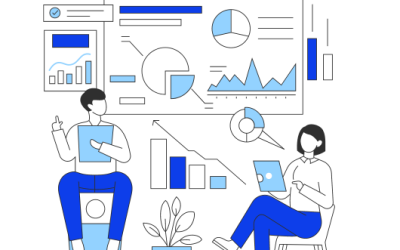In the last two articles, we shared ways you can use your CRM to manage your brand message and your brand assets. A consistent brand message and up-to-date assets are key factors in company growth and customer loyalty. As important as the first two are, there is a third factor that you must not ignore. That is brand reputation.
What is brand reputation?
Brand reputation is the public perception of your brand including customers, the community, and employees. Public perception can give your company growth a boost, but it can also be a roadblock.
Let’s continue our story of Ken’s Kitchen. Ken has taken steps to build a consistent brand message. He uses his CRM to manage the message through templates and workflows so that his team has the same brand voice. He also made his CRM the central hub for his brand assets and set permissions, so his team only has access to the most recent and approved assets such as the company logo, email signature, and so on.
The CRM has made Ken’s life easier as a business owner who needs to manage his brand. Now that messaging and asset management is under control, he wants to know what people think about his brand. He already monitors Yelp, Google Reviews, and social media. He responds to both positive and negative reviews, but he wants to strengthen the public perception of his business beyond responses.
Ken wants to accomplish two goals when it comes to brand perception.
- When someone hires Ken’s Kitchen, they are treated like royalty throughout their customer journey.
- When people think about renovations or new kitchen construction, Ken’s Kitchen is without a doubt top of mind.
To do this, Ken needs to understand what his customers are saying and how his team is interacting with both customers and prospects. After all, people like to talk, and, unfortunately, people are more likely to share a negative experience than a positive experience. However, if customers have a great experience, they will take time to spread the word.
Ken wants to build a great experience for his customers as well as learn from negative experiences so that it is not repeated. He has already used his CRM to manage his brand message and assets. Now, Ken is going to use his CRM to manage and strengthen his company’s brand reputation. After speaking with a CRM consultant about customer interaction and brand reputation, Ken was able to integrate three strategies so he could use his CRM to monitor and strengthen a positive and loyal perception of his company’s brand.
Monitor how prospects and customers respond to your communication
It is your goal, just like Ken, to provide the best customer service, but sometimes that is not the case. As a company, you respond to the negative experience and do what you can to make it right, but what if this is happening often.
You can create a dashboard in your CRM to monitor and analyze sentiment. Sentiment analysis takes the conversations and interactions and puts them into context. Whether it is a positive or negative experience, a dashboard in your CRM can help you understand how your customers feel about your company and service. You can use the data to address patterns that are causing negative experiences and build on patterns that are creating positive experiences for your customers.
Turn customers into brand champions
As we said earlier, people like to talk. Ken recognizes this. He also knows that people like to show off whatever is new in their life like a new sports car, a new gadget, and, of course, a new kitchen. Ken wants his customers to be proud of their new kitchen and spread the word. He began using his CRM to build a referral program and create brand champions. He used CRM data to learn from customers who make referrals and to identify and nurture other customers who could be potential brand champions. He created segments with automated email campaigns to nurture customers based on criteria such as new construction, property manager, homeowner, or kitchen remodel. The branded message is specific and relevant to each segment and invites customers to become brand champions. By nurturing with messages to each segment, Ken saw an increase in referral program participation and brand champions.
Engage with your customers by asking for feedback
Feedback is the customer’s opportunity to share their experience. However, companies do not like to ask for feedback, because they fear the worst. Ken wants to hear the worst and the best, so he started to use his CRM to send out feedback emails or texts after a sale is made, a project is completed, and after customer service inquiries. Ken’s sales team responds to every feedback submission. The feedback encouraged conversation and made the customer feel valued. The feedback helped him strengthen his brand reputation by addressing issues, changing team behavior as needed, and building on positive experiences.
Conclusion
The steps that Ken took to manage his brand message, assets, and reputation did not happen overnight, but it improved customer service and increased business. Recognizing that he could use his CRM as a brand management tool along with sales and customer service was the first step to strengthening his company’s brand. He started with a plan. If you would like to use your CRM to strengthen your brand, you need to have a plan. Contact us to schedule a free phone consultation or to demo X2CRM.





